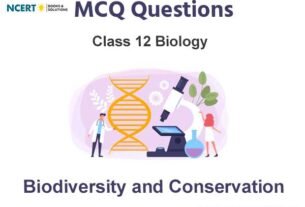Please refer to the MCQ Questions for Class 12 Geography Chapter 12 Geographical Perspective on Selected Issues and Problems with Answers. The following Geographical Perspective on Selected Issues and Problems Class 12 Geography MCQ Questions has been designed based on the latest syllabus and examination pattern for Class 12. Our experts have designed MCQ Questions for Class 12 Geography with Answers for all chapters in your NCERT Class 12 Geography book.
Geographical Perspective on Selected Issues and Problems Class 12 MCQ Questions with Answers
See below Geographical Perspective on Selected Issues and Problems Class 12 Geography MCQ Questions, solve the questions and compare your answers with the solutions provided below.
Question. ‘Urban waste disposal is a serious problem in India.’ Suggest measures that we as citizens can take to solve this problem of urban waste.
(A) Proper waste disposal bins provided by the municipality
(B) Segregate the wet and dry waste
(C) fines can be issued for not disposing waste in the required manner
(D) All of the Above
Answer
D
Question. Combustion of fossil fuels, mining and industries are the main sources :
(A) air pollution
(B) noise pollution
(C) smog
(D) diseases
Answer
A
Question. Which of the following is/are consequences of water pollution?
(A) Rivers are contaiminated
(B) Water-borne diseases
(C) Degrading quality of groundwater
(D) All of these
Answer
D
Question. __________ are residential areas of the least choice,dilapidated houses, poor hygienic conditions, poor ventilation, lack of basic amenities like drinking water, light and toilet facilities, etc.
(A) Slums
(B) Flats
(C) Bunglows
(D) playground
Answer
A
Question. _________makes people vulnerable to drug abuse, alcoholism, crime, vandalism, escapism, apathy and ultimately social exclusion.
(A) Crime
(B) Poverty
(C) Criticism
(D) adrenal rush
Answer
B
Question. Jhabua district is located in the western most agroclimatic zone in Madhya Pradesh suffers from:
(A) High rains
(B) Resource degradation
(C) High tourist activities
(D) High Government control
Answer
B
Question. Temporary or a permanent decline in productive capacity of the land is known as :
(A) land degradation
(B) marshy land
(C) desalination of land
(D) land up gradation
Answer
A
Question. Migration of people from developing to developed countries will normally cause an absolute increase in global :
(A) emissions
(B) unrest
(C) harmony
(D) peace
Answer
A
Question. Noise pollution is location specific and its ………… declines with distances.
(A) quality
(B) intensity
(C) pitch
(D) frequency
Answer
B
Question. The Swachh Bharat Mission was launched in:
(A) 2014
(B) 2015
(C) 2016
(D) 2017
Answer
A
Question. Consider the following statements and choose the correct option
I. Poor people usally prefer to settle in mega cities for their livelihood.
II. Mega cities provide good opportunities for their livelihood.
Codes
(A) Only I is correct
(B) Only II is correct
(C) Both statements are correct
(D) Both statements are incorrect
Answer
C
Question. Rajiv Gandhi Mission for Watershed Management was started in:
(A) 1998
(B) 1996
(C) 1994
(D) 1992
Answer
C
Question. Glasswares, plastic containers, polythene bags, ashes, floppies, CDs, are examples of :
(A) pollutants
(B) solid waste
(C) fertilizers
(D) poison
Answer
B
Question. Which stretch of Yamuna is most polluted?
(A) Delhi to Ghaziabad
(B) Delhi to Agra
(C) Delhi to Noida
(D) Delhi to Etawah
Answer
D
Question. Mention the sources of water pollution in India.
(A) Toxic effluents from industries
(B) Sewage disposal
(C) Pesticides
(D) All of the Above
Answer
D
Question. Slums in India suffer from which of the following problems?
(A) Lack of basic amenities
(B) Over crowded streets
(C) Unregulated drainage system
(D) All of these
Answer
D
Question. National Mission for Clean Ganga was started in:
(A) 2009
(B) 2011
(C) 2013
(D) 2014
Answer
B
Question. Leather, pulp and paper, textiles and chemicals industries are the major :
(A) acid rain producing industries
(B) water polluting industries
(C) pesticides producing industries
(D) Toxin polluting industries
Answer
B
Question. Gullied/ ravenous land, deserted or coastal sands,barren rocky areas, steep sloping land are examples of:
(A) Wasteland
(B) Upland
(C) Refill
(D) None of the Above
Answer
A
Question. The immediate alterations that the world is witness in climate all across the globe is due to :
(A) global warming
(B) water borne diseases
(C) reservoirs
(D) regular rains
Answer
A
Question. Which of the following is/are the pollutants of water?
I. Oil and grease
II. Insecticides and pesticides
III. Heavy metals
Codes
(A) I and II
(B) I, II and III
(C) II and III
(D) I and III
Answer
B
Directions : In the following questions, A statement of Assertion (A) is followed by a statement of Reason (R). Mark the correct choice as:
(A) Both A and R are true and R is the correct explanation of A.
(B) Both A and R are true but R is NOT the correct explanation of A.
(C) A is true but R is false.
(D) A is false and R is true.
Question. Assertion (A): Ganga, as a river, has national importance.
Reason (R): The river requires cleaning by effectively controlling the pollution for its water.
Answer
B
Question. Assertion (A): Surface water available from rivers,canals,lakes, etc. is never pure.
Reason (R): It contains small quantities of suspended particles, organic and inorganic substances.
Answer
A
Question. Assertion (A): Noise pollution refers to the state of unbearable and uncomfortable to human beings which is caused by noise from different sources.
Reason (R): This matter has become a serious concern only in recent years due to a variety of technological innovations.
Answer
B
Question. Assertion (A): Poisonous elements released from the industries reach the reservoirs, rivers and other water bodies, which destroy the bio-system of these waters.
Reason (R): Most of the industrial wastes are disposed off in running water or lakes.
Answer
A
Question. Assertion (A): Environmental pollution results from ‘there lease of substances and energy from waste products of human activities.
Reason (R): There are many types of pollution.
Answer
B
Question. Assertion (A): Various types of chemicals used in modern agriculture such as inorganic fertilisers,pesticides and herbicides are also pollution generating components.
Reason (R): These chemicals are washed down to rivers, lakes and tanks.
Answer
A
Question. Assertion (A): Through watershed management programme the degradation of land in Jhabua district has controlled in a significant manner.
Reason (R): About 20% of the total area under Jhabua district has been treated by the watershed programmes.
Answer
A
Question.Assertion (A): Combustion of fossil fuels, mining and industries are the main sources of air pollution.
Reason (R): These processes release oxides of sulphur and nitrogen,hydrocarbons, carbon dioxide, carbon monoxide, lead and asbestos.
Answer
A








